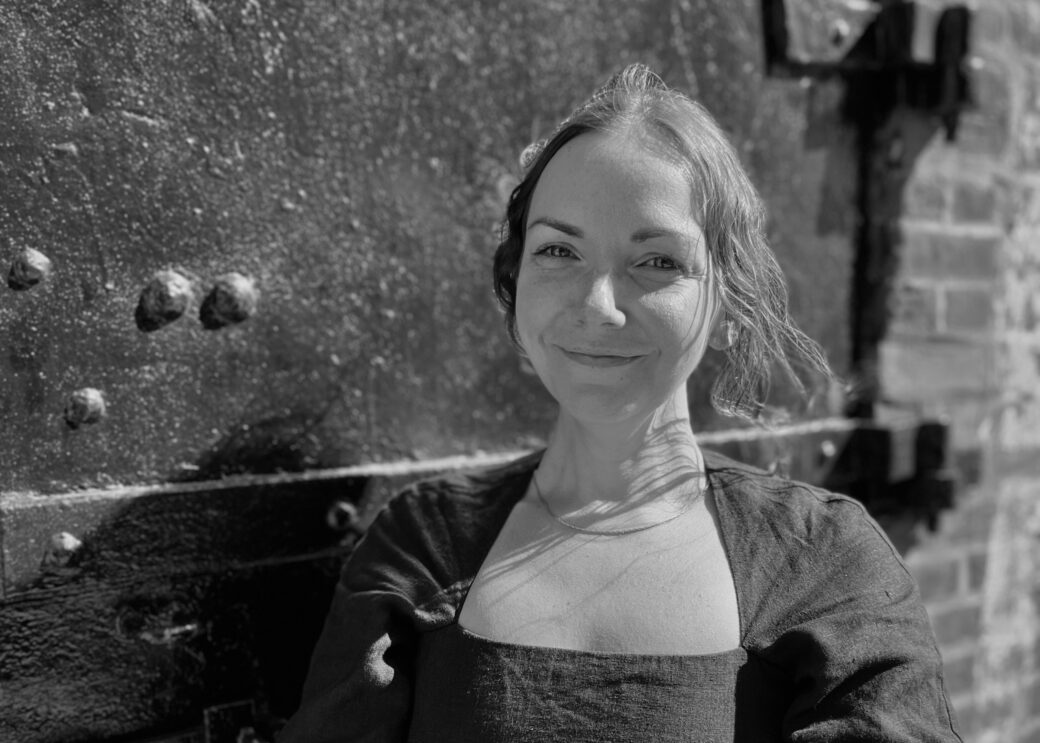
Detail view of ArtNow: The Soul Is a Wanderer


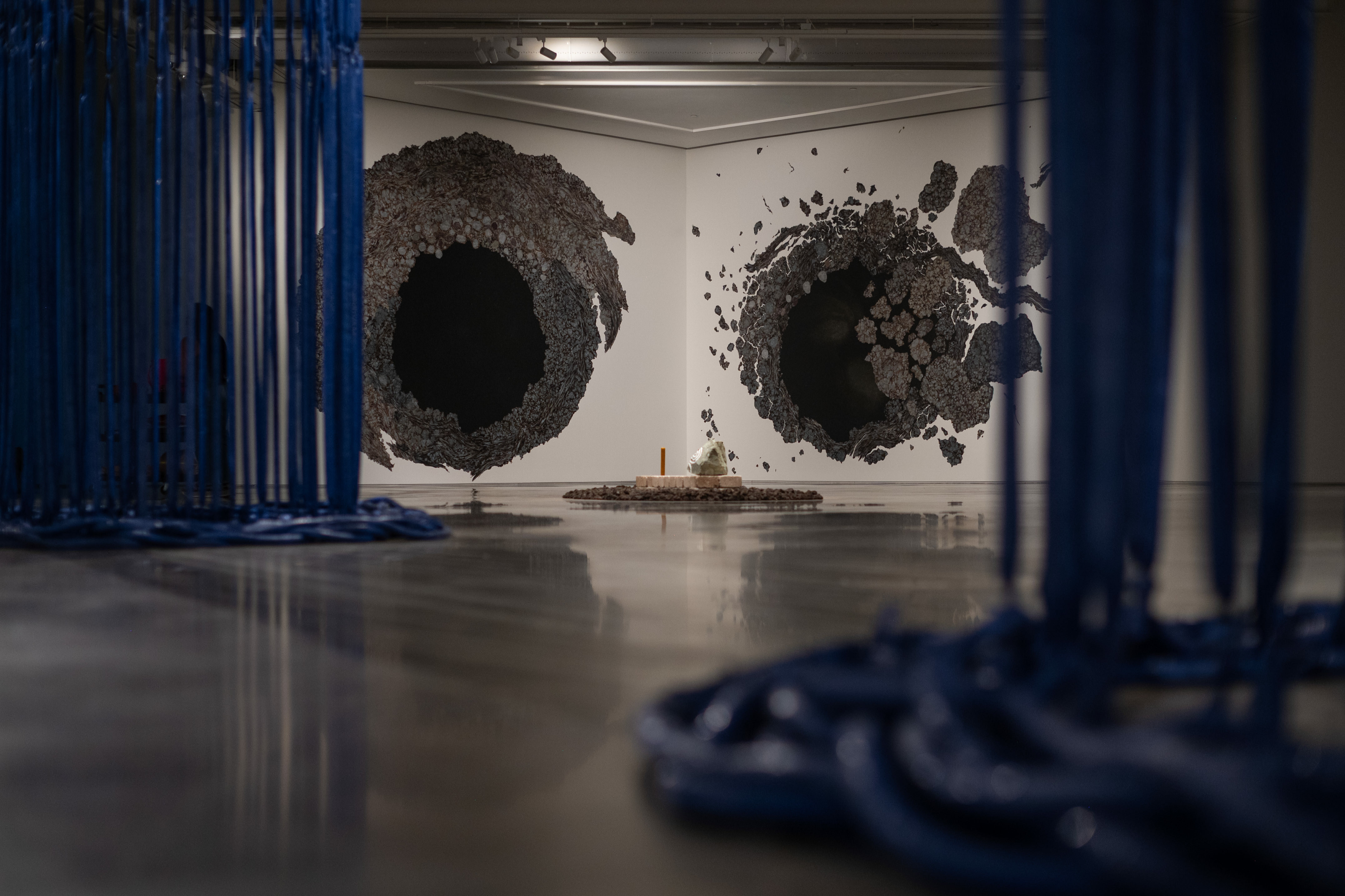
Detail view of ArtNow: The Soul Is a Wanderer
As we bid ArtNow: The Soul Is a Wanderer farewell Jan. 15, it only seemed fitting to do one final dive into the exhibition. And who better to discuss curatorial insights and inspiration, creative processes and more than with the show’s curator?
We sat with Oklahoma-born and -based Guest Curator Lindsay Aveilhé to chat all things The Soul Is a Wanderer, from her initial interest in curatorial work and transition to surveying contemporary Oklahoma artists to the groundbreaking artworks on view in the Main Gallery, from conception to installation.
How did you get
started in curatorial work?
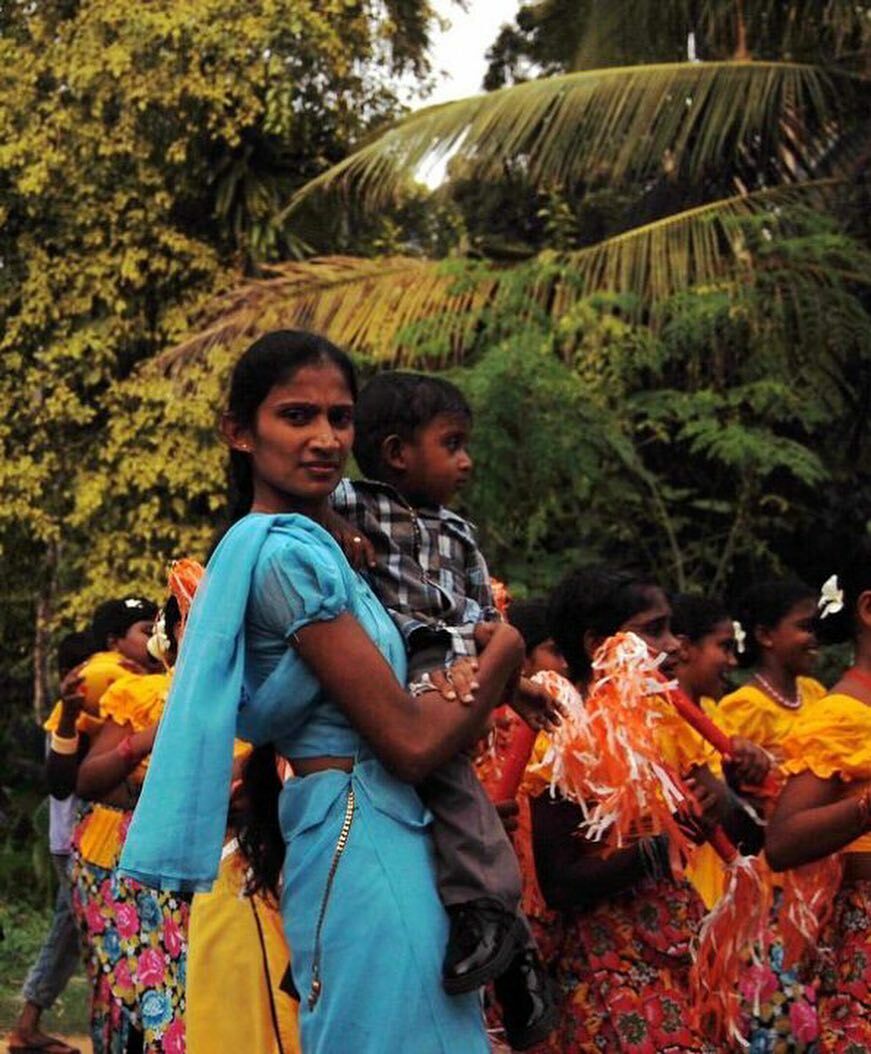
A parade in Colombo, Sri Lanka
I went to the University of Oklahoma for undergrad, and I took a lot of art history and art classes. I wasn’t quite sure at the time what a curator does – I just didn’t fully understand it. I moved to New York with the idea that I would figure it out, that I would go and work at a gallery and do something like that. Well, I ended up working at the United Nations for three years, and that was interesting. I was still learning on my own and [doing] self-study, but also working in humanitarian and women’s rights. I then had the opportunity to move to Sri Lanka. It was a good opportunity for me to, what I thought, go to a place I had never been before, meet artists and then write about it. And obviously to do humanitarian work as well. I was there for a year and did volunteering for nonprofits, worked with the U.N. a bit, and I did photography and wrote for a local travel magazine on the Sri Lankan art scene. So that was kind of my way of transitioning. I was just doing a bunch of stuff – this was my 20s!
When I got back to New York I was offered a job back at the United Nations and I was like, “nope! This is my transition moment.” I was still doing photo researching and photo editing for big publishing companies, but I also did a curatorial internship at a place called Exit Art. Exit Art had been around since the ‘80s – and to me, and for a lot of people, it was a very important art space.
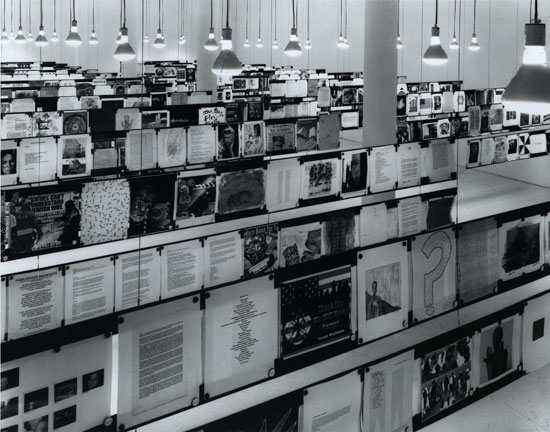
They were, before museums were doing this, showing people of color and showing people doing new and interesting works that weren’t being accepted into these other institutions. And that was how I bridged both my humanitarian and U.N. work with my curatorial work by interning with this nonprofit art institution that, to me, did big, experimental, cutting-edge exhibitions.
While I was doing that, I applied for grad school in art history, knowing I had to make a bigger, bolder transition. I went to Hunter College in New York, and their program is not only catered toward professionals, but is a place, a school, where artists can go and get affordable art spaces in New York City. I would say it’s one of the only places that’s affordable. That was really important to me because already at this point I had grappled with the struggle to be an artist in a big city – or anywhere really – and a lot of arts programs charge artists so much money to go and get their masters and their undergrad, and it sets them up in a way to be in debt. So that was really great! Going to school in New York City, meeting your professors, meeting other students, was great. Recently I curated a show at Oklahoma State University on contemporary Latin American art, and the co-curator of that who I asked to work with me is someone I knew from grad school who is fantastic. Those kinds of relationships were really important, and I learned a lot from them.
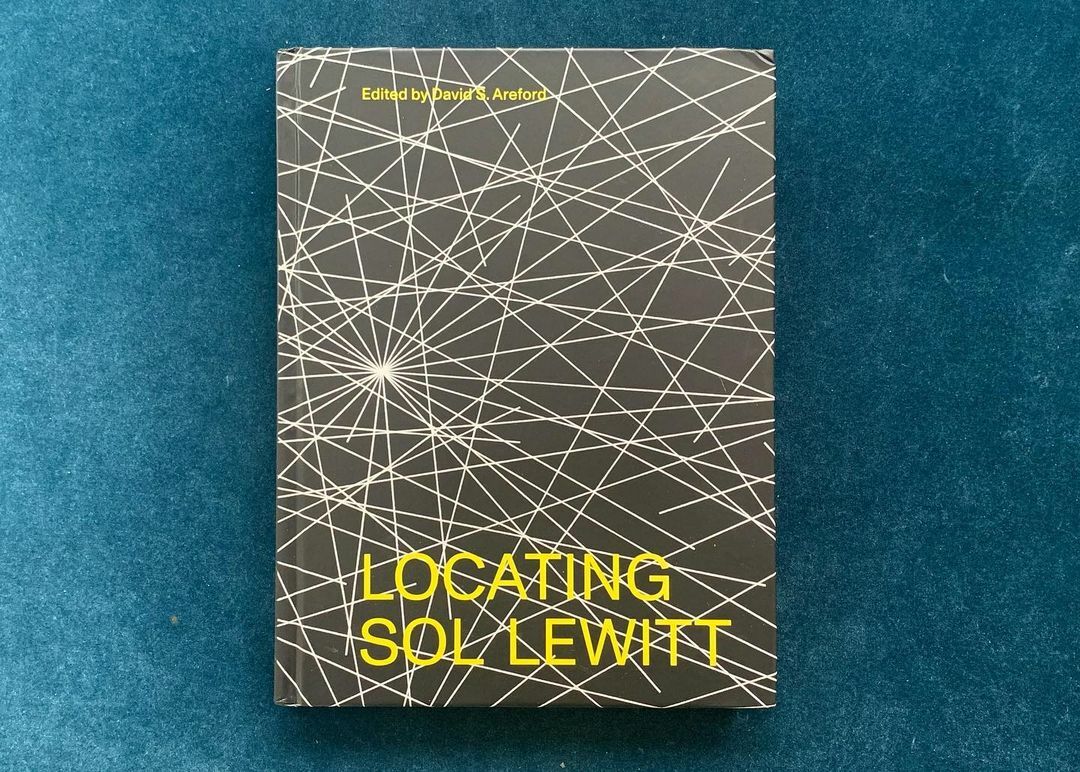
Locating Sol LeWitt (2021)
While in New York, I started working in more art historical research and archives while also doing my own kind of thing. There were a few years of that, then I became the editor of my own project with an artist, Sol LeWitt. That kind of became my career, being an expert of one artist but also a moment in time. So it became that, morning to night, working on this massive publication for eight years. Then you start curating shows on that person’s work, you start getting asked to write, and speak, and do projects on them. That exposed me to curate work and shows for all types of institutions.
How did you become involved in the Oklahoma art scene?
I knew I missed working with living artists, so I wanted to see what was out there and the possibilities. COVID happened, and at the time I wanted to move back to Tulsa to be with my family, not sure if I would stay but wanted to explore and see what was going on in Oklahoma. I’m still learning to be honest, and there’s always something new, new artists, people moving back.
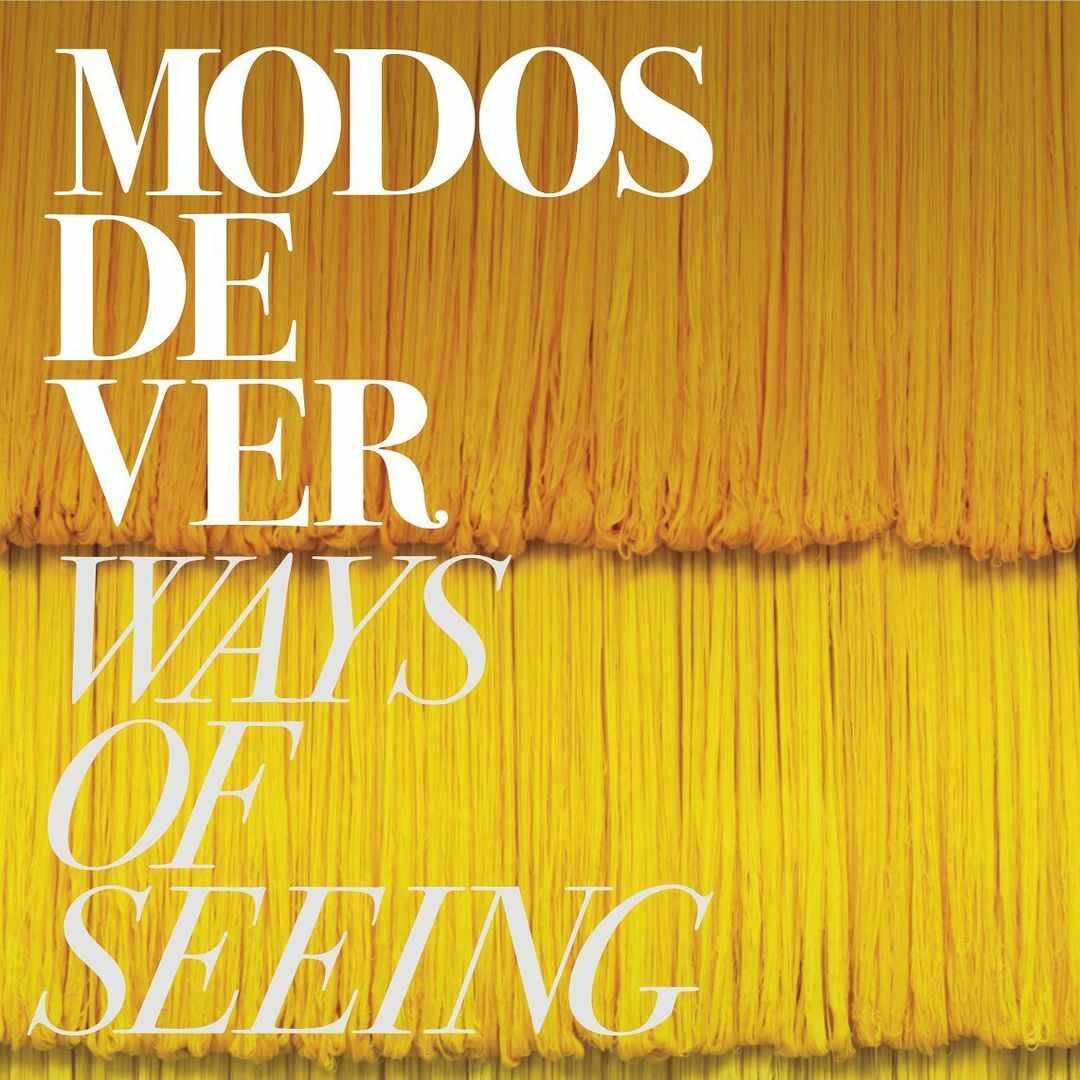
Modos de ver/Ways of Seeing
I took the job as the Director of the Gardiner Gallery of Art at OSU. As a curator you always say you need space, or you need a space to put things in to envision what might go in there. So that’s been a good outlet for me. But also working at the university, meeting and working among young artists, becoming aware of their concerns or what young artists are grappling with, what they think their possibilities are. When I was younger, you would leave. Not everybody obviously, but to be able to make a career, you left, that was the landscape. The internet was barely around when I moved to New York, and those things have all changed. I’m interested in exploring that change, what that means for a state in the middle of the country, and what does it means for the artists here.
What inspired the overall theme for The Soul Is a Wanderer?
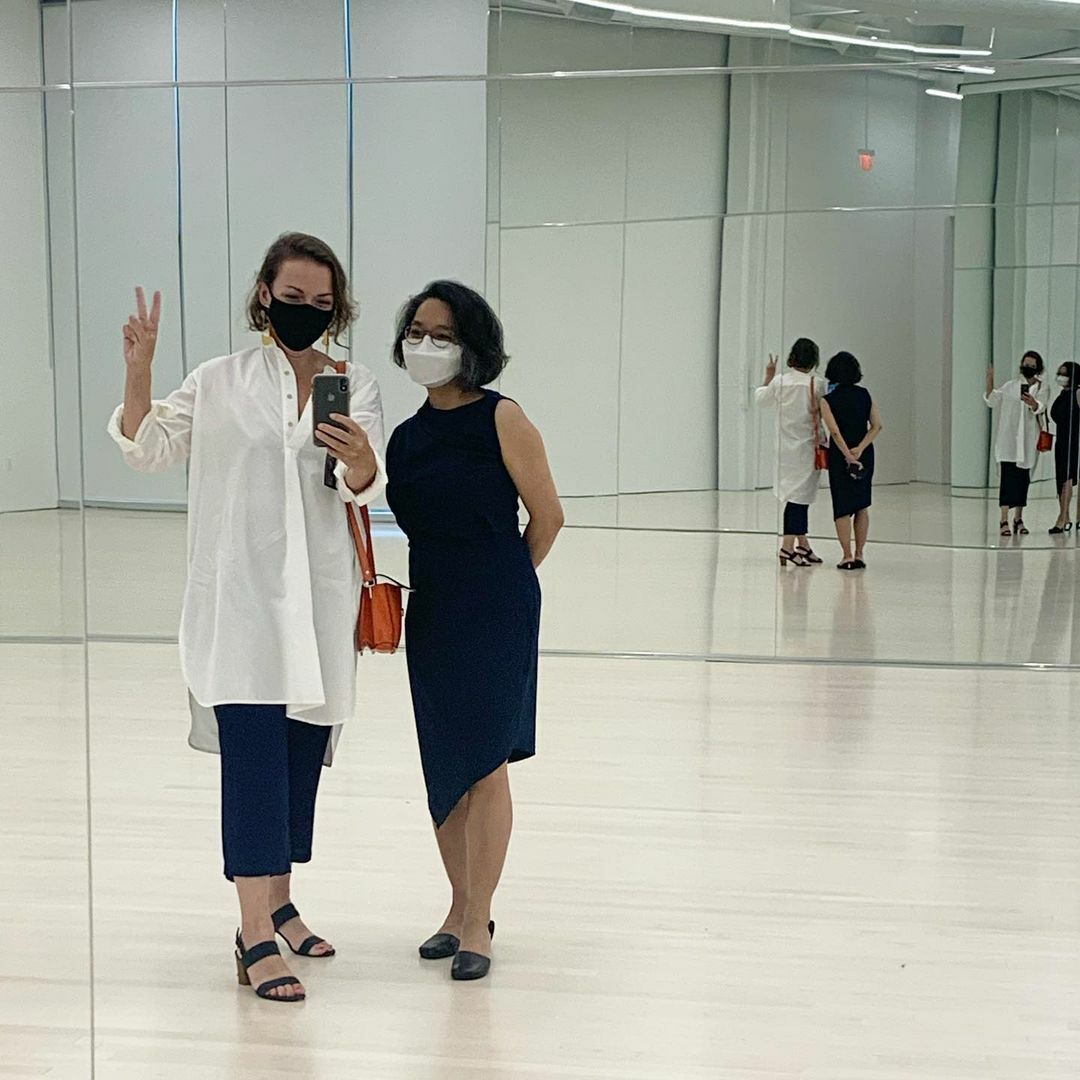
When Senior Director of Curatorial Affairs Carina Evangelista asked me to do the exhibition, I was so excited. I had already begun thinking and writing about surveying Oklahoma artists, so when she asked me, it was perfect. What I think is always fun about curatorial work is the creativity of the ideas, and then how that essentially morphs and changes over time. When you think about museums and galleries, they’re working two to three years out, it’s very far in advance. Outside of museums, younger people who are interested in curatorial don’t quite understand the time it takes, and universities are the same. I was really excited to have this large amount of time to meet with people, do studio visits, think about my original idea and see how that changed over time when I saw their work. The original idea is slightly grounded in the same thought, but when you meet artists and you start talking to them about what they’re interested in and what their work is, things come out organically. And then the next artist might be tied to that artist in some way because of the conversations.
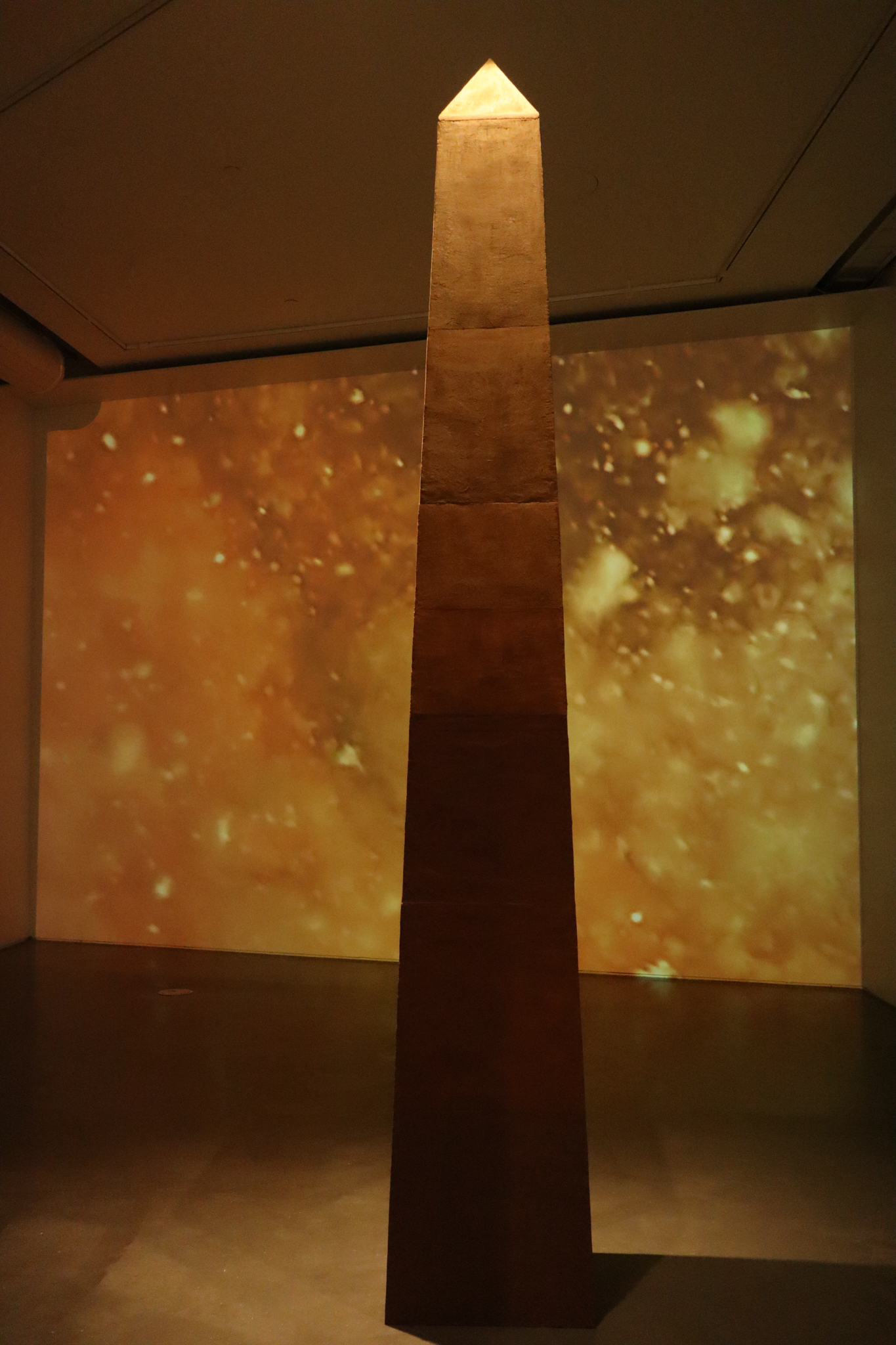
Ashanti Chaplin's Earth Elegy (2023)
The exhibition is funny to me, because it’s aesthetically so tied, which was not on purpose, and there’s always a lot of surprises, especially with commissioning work. Each artist is very different in their approach. ArtNow is an exhibition I’m the proudest of that I’ve done. I mean it looks great, that’s one thing, and I think sometimes my approach curatorially is to let things be both aesthetic and pleasing for those who are not immediately going to engage with the concept of the work, to then entice them to engage with the concepts. I think all the works are emotional in some way and powerful, and probably appeal to so many people in different ways.
I think for people like me, when I came back to Oklahoma and was then asked to curate the exhibition, I thought, “We have to think about this in a way that’s positive.” Oklahoma has so many stories and so many histories that are beautiful, despite the past. Some people don’t want to see the painful side of things, but for me, it’s restorative. It’s tender, its loving, it’s all those other things that counter all the bad. For me, too, learning about all these histories makes me feel even more tied to where I’m from. Even the Historic Black Towns in Ashanti Chaplin’s project, she is someone, like me, who grew up here, is tied here through generations. She’s worked at the biggest institutions in New York, both as an artist and curator of public programming, and she’s coming back and really trying to reconcile with her own history here. Instead of being revolted by it and saying, “Never again,” she chose to explore it and connect with the land in a different way, from the score to the clay.
What are some of your favorite moments from the exhibition?
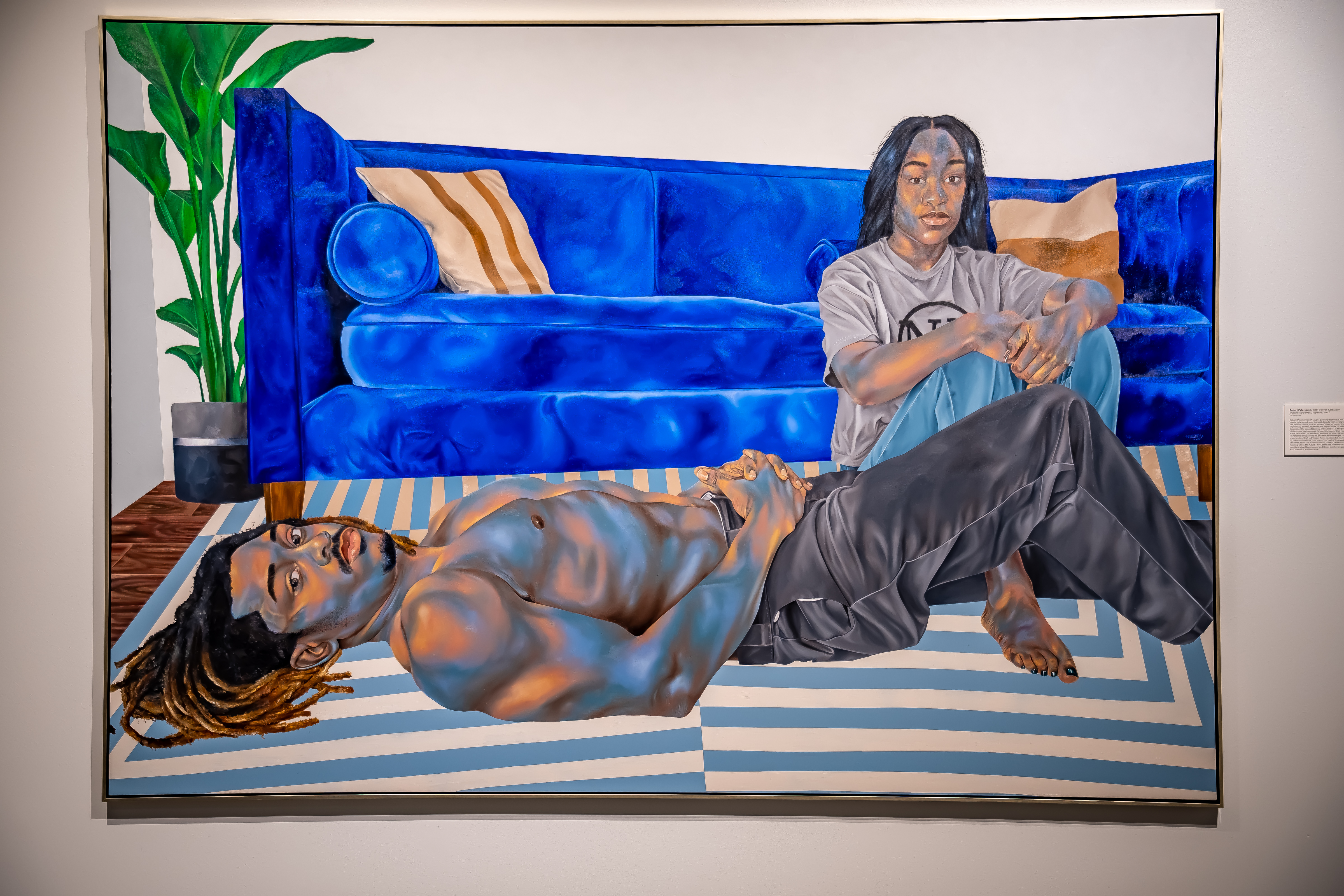
Robert Peterson's Imperfectly perfect, together (2023)
All of the artists are pretty outstanding. Like Robert Peterson, who is self-taught and lives in Lawton; someone like Kite, who has lived all over and has a strong tie to Oklahoma, is an amazing artist and who had not been shown in a museum in Oklahoma.
Kite, I knew her work deals with Lakota cosmology and belief systems, and then she ended up creating that video work for this exhibition. And I knew it was going to be cosmology related, but not necessarily, and then thinking about it in terms of what Molly Kaderka’s work does physically in the space, and then what Kite’s work does almost actually transport you and make you think of motherhood. And Molly’s work is just crazy. It’s just technically so amazing and so powerful.
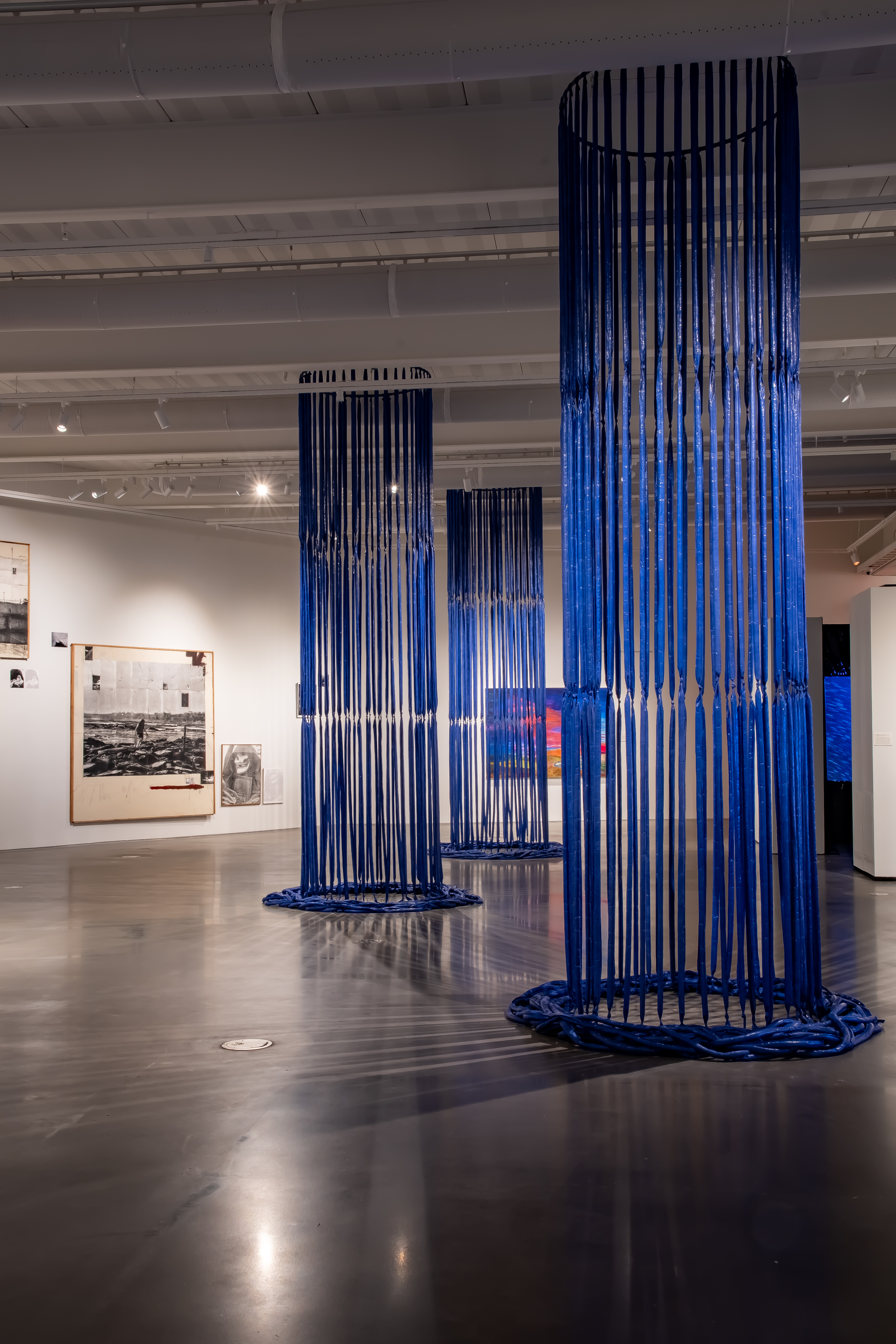
Installation view of ArtNow: The Soul Is a Wanderer
I loved when we first brought in Elspeth Schulze’s work and when we first raised it. To me, when we lifted that up, I knew it was the perfect piece for this show. It centers everything, it ties everything together, and it’s monumental in a way I don’t think she’s worked in yet. When we were talking about layout, there was the whole thing about Moira RedCorn’s piece being in the back. And you never want anyone to feel their work is hidden from view or not in the best space, but I feel it really worked out. You can see this vibrant thing through Elspeth’s work, and the painting just pulls you in.
The fun thing about working with Joseph Rushmore, I had seen his photography on Instagram and in a magazine, and I had seen him in a small show here in Tulsa. That was the first time he had ever experimented with how he was presenting his photographs, and I think through a lot of back-and-forth conversation we were able to piece together how the ArtNow installation would look. He hadn’t really done that type of work before in a museum or fine-art context, and it was kind of a risk, but it turned out from something we might not understand to what it looks like to now, where to me it’s just so beautiful, the whole thing.
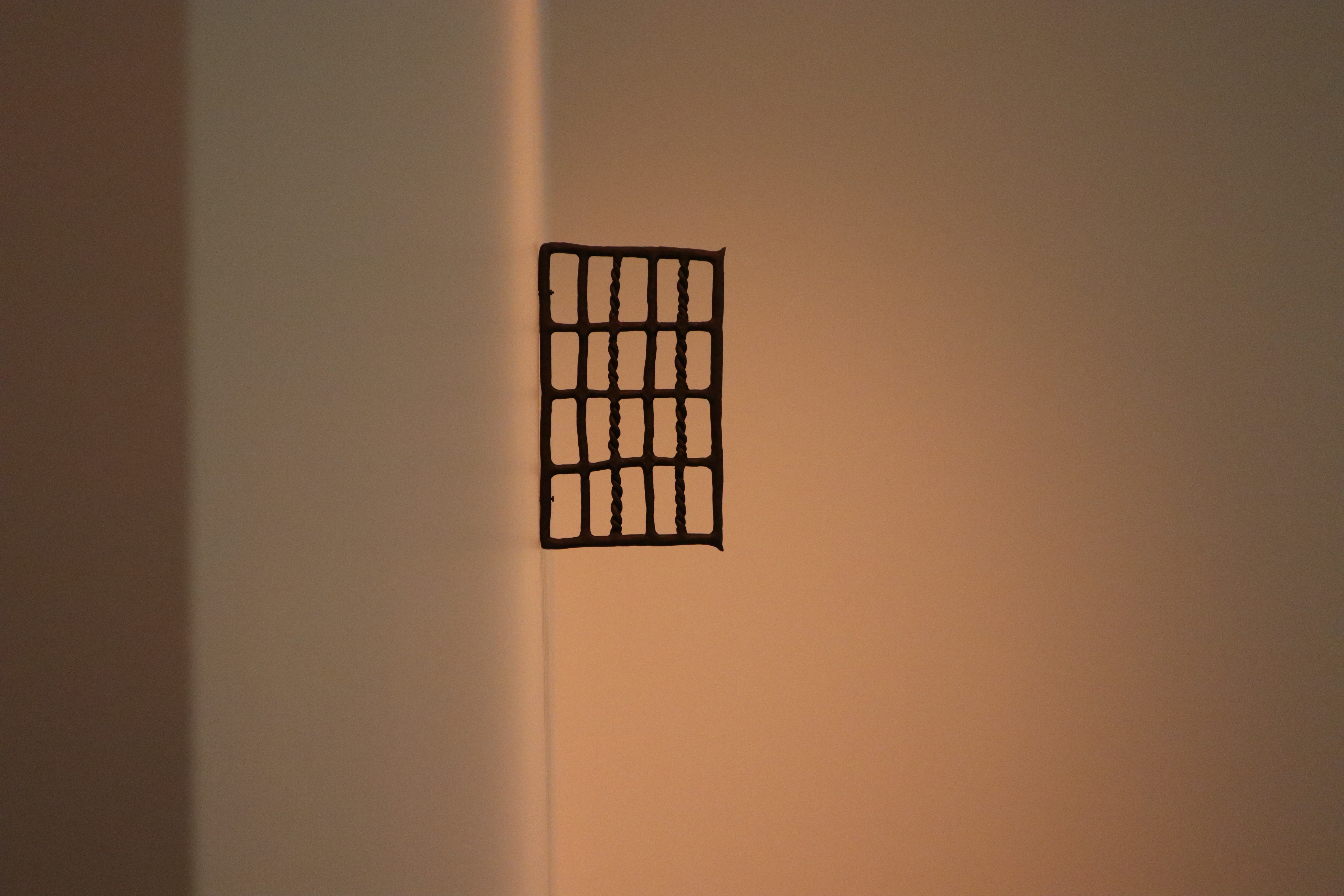
Isaac Diaz's Ventana///Window (2023)
I also had a lot of fun working with Isaac Diaz, too, because I’m really a fan of his work and he also hasn’t shown so much in a gallery context. The way he presents his work in his own images is very artistic, very installation style. I really wanted his pieces in the show to be spread out and act like little moments. The works in the show are like, “This is Ahsanti’s work, this is Molly’s work,” but with Isaac’s work being moved around a little bit, it makes everything feel more cohesive.
Yatika Fields’ work was also an exciting process because he does mostly murals and paintings, and Oklahoma Contemporary has shown his work before. But originally when I talked to him about the exhibition, I was super interested in his project called War Club. It’s with his mom, Anita Fields, and essentially it’s a meeting or public forum conversations with different people in the community about any sort of issue that might be interesting or important, and then Yatika creates these hand-painted war clubs that he presents to the participants. As an art and community-building concept, I thought this was really important, and it was an extension of his artistic practice. So I asked if he wanted to do something around that, and he wanted to do something a little different. But I was blown away with what he did. That painting, Whose Kicks?, is not like any of his other paintings, and I love it so much. That piece, I think, is important for his work.
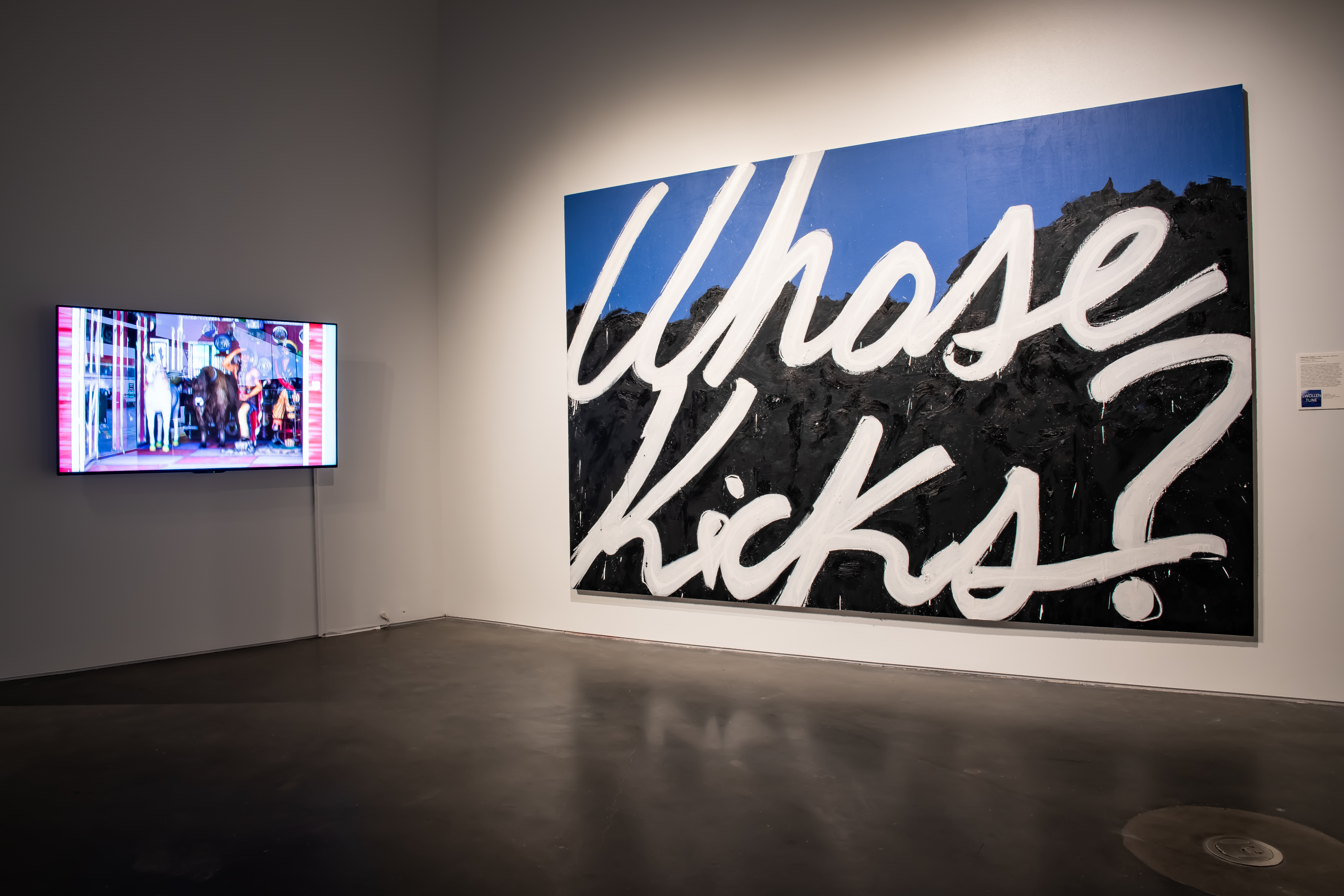
Yatika Fields' Go West Young Man (2023) and Whose Kicks? (2023)
Even the video work in the exhibition should be turned into a long-form PBS documentary. It offers an opportunity to tell different stories. It’s not saying everyone was an asshole back then, but if we think about and reframe these conversations, or reframe the signs along Route 66, or think about creating new monuments from contemporary Indigenous artists, there’s all these possibilities. Instead of being afraid of your history and not wanting to talk about it, all you have to do is shift it and reframe it through storytelling.
I think a lot of people get defensive because things are so polarized. At least I know with Yatika and Ashanti, it’s restorative justice. You restore and you teach, and you tell new stories, and you educate.
I wish I could do this five more times. Not exactly the same! But I wish I could continue to do those kinds of shows here. I learned a lot in the process, and I’m super proud of it.
Want more? Find the ArtNow 2023 Focus Awards Artist Talk with Aveilhé and exhibiting artist Sterlin Harjo here. Catch The Soul Is a Wanderer before it’s gone! Hear from and experience contemporary artists navigating the complexities of the past, reflecting on actualities of the present and envisioning self-made possibilities of the future. Admission is always free.
Images:
Lindsay Aveilhé. Photo: Lola Serrano.
Installation view of ArtNow: The Soul Is a Wanderer, including Molly Kaderka's Ferrous Form/Unform (2023), Isaac Diaz's Projection///Placement (2023) and Elspeth Schulze's The Sparing Ones (2023). Photo: Lexi Hoebing.
A parade in Colombo, Sri Lanka. Photo: Lindsay Aveilhé.
Installation view of Reactions (2002), an exhibition in response to 9/11 at Exit Art. Photo courtesy of The Paris Review.
Locating Sol LeWitt (2021). Photo: Lindsay Aveilhé.
Modos de ver/Ways of Seeing visual identity. Image courtesy of the Gardiner Gallery of Art.
Lindsay Aveilhé (left) and Carina Evangelista (right) during a visit at Oklahoma Contemporary in 2021 for ArtNow. Photo: Lindsay Aveilhé.
Detail view of Ashanti Chaplin's Earth Elegy (2023). Photo: Cassandra Watson.
Installation view of Robert Peterson's Imperfectly perfect, together (2023). Photo: Ann Sherman.
Installation view of ArtNow: The Soul Is a Wanderer, including Joseph Rushmore's No Know Place (2019-2023), Elspeth Schulze's The Sparing Ones (2023) and Moira RedCorn's Ma^zha^ tseka Ma^thi^ (Moving to a New Country) (2022). Photo: Ann Sherman.
Installation view of Isaac Diaz's Ventana///Window (2023). Photo: Cassandra Watson.
Installation view of Yatika Fields' Go West Young Man (2023) and Whose Kicks? (2023). Photo: Ann Sherman.
Return to New Light.
Monday 11 a.m. - 6 p.m.
Closed Tuesday
Wednesday 11 a.m. - 6 p.m.
Thursday 11 a.m. - 9 p.m.
Friday - Sunday
11 a.m. - 6 p.m.
see additional holidays
Visit us at
11 NW 11th St.
Oklahoma City, OK 73103
Phone: 405 951 0000
Fax: 405 951 0003
info@okcontemp.org
SEND MAIL TO
Oklahoma Contemporary
P.O. Box 3062
Oklahoma City, OK 73101
STAY UP TO DATE
Join our mailing list to learn about our events, exhibitions, education and more.
©2024 Oklahoma Contemporary All Rights Reserved.